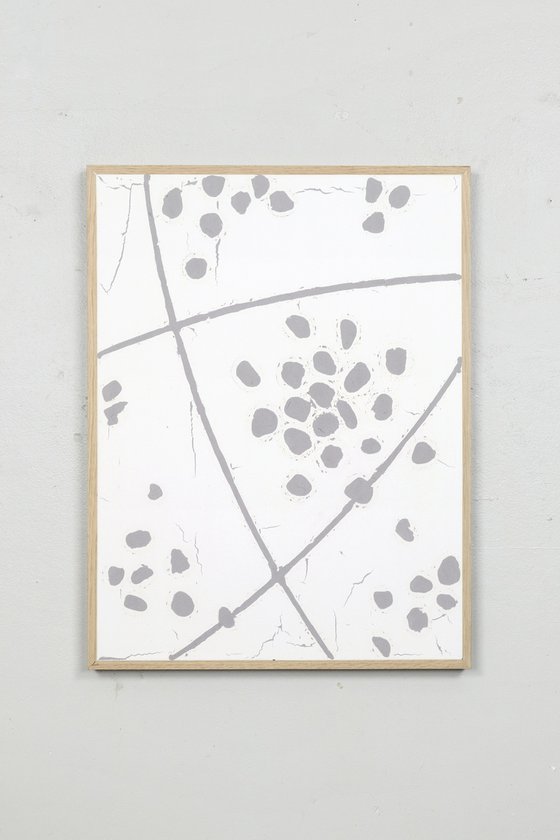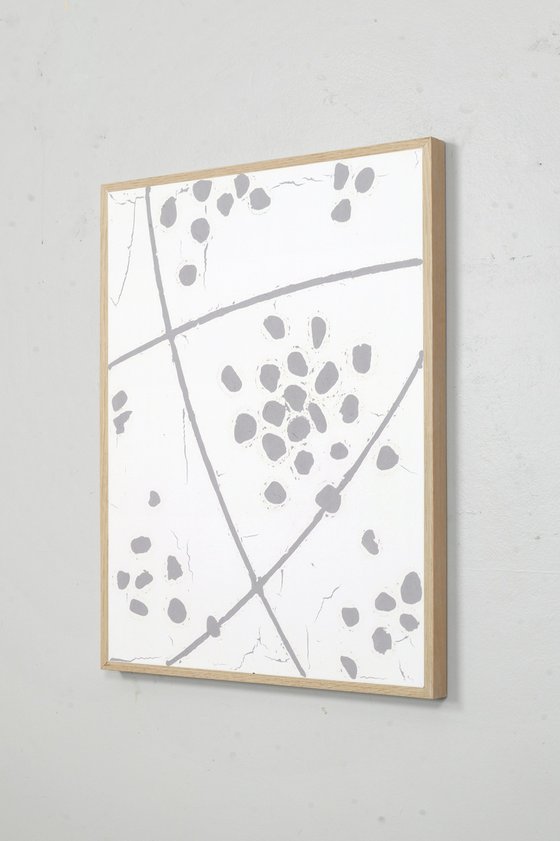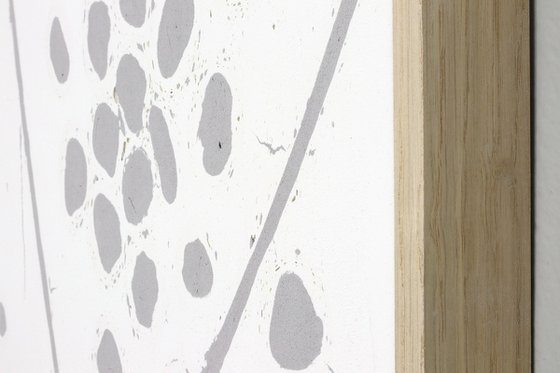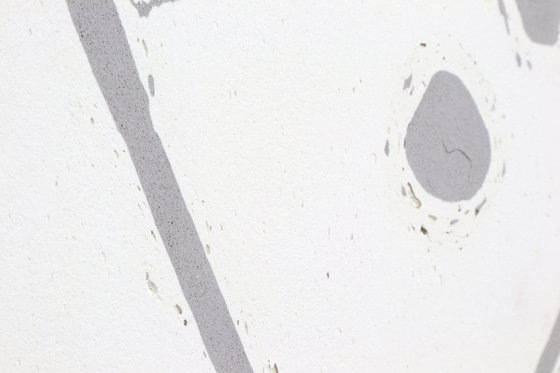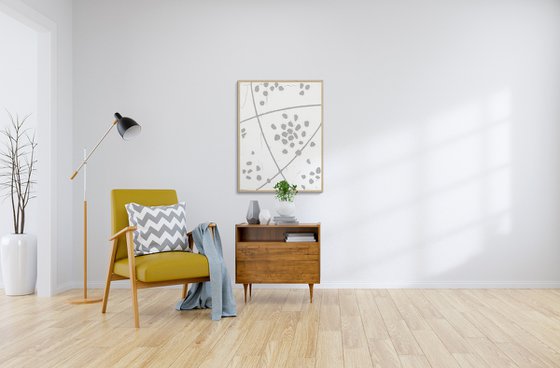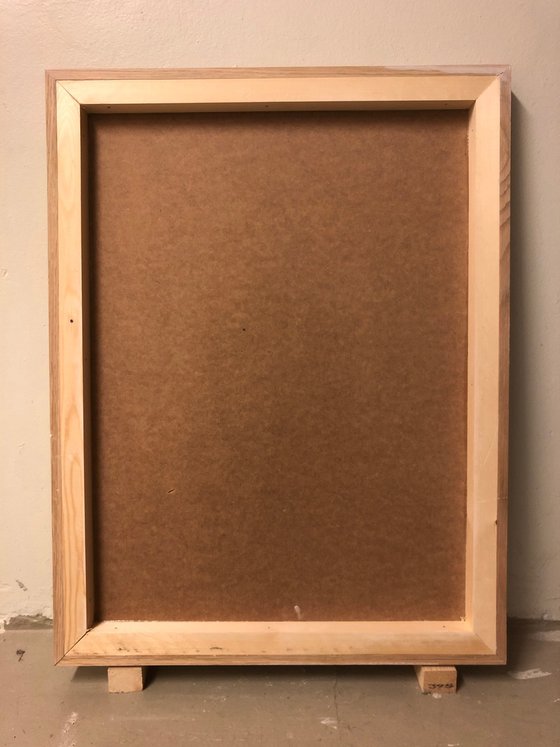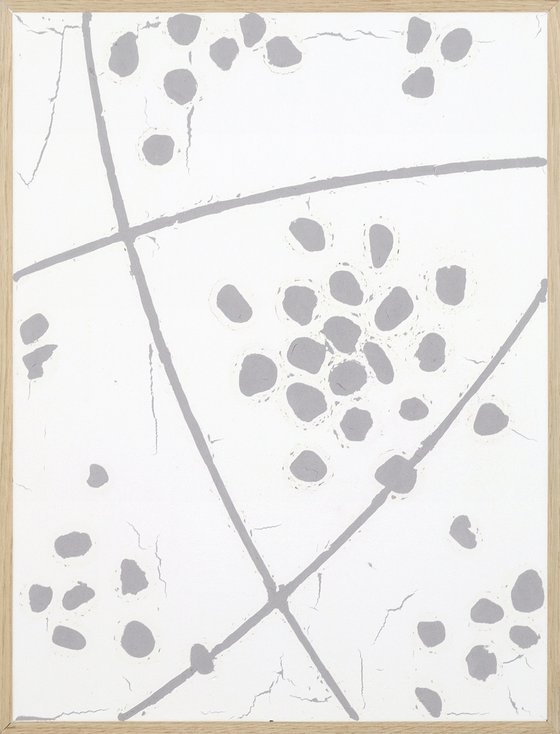- By medium
- By subject
- By budget
- Sales
- Gift cards
- Discover all art
- Artists
- Editors’ picks
- Ideas

#504 Apophenia
$1,698.75
Original artwork description:
My works are not painted but cast in oak panels using standard wall filler.
The titles a cognitive bias that describes the tendency to perceive meaningful connections between unrelated things. One relevant example is Pareidolia, where you see images in random patterns, such as animals in the clouds, etc. It also applies to paranoia, schizophrenia and the belief in conspiracy theories. Another example is the gambler's fallacy, where you think the number six is more likely to turn up after a long streak of other numbers.
Social Engineering
The works in the series feature stone imprints and a composition made with rulers and/or compasses, the instruments used by architects and engineers to divide space. The term social engineering has mainly been used to describe how socialist states tried to indoctrinate their citizens. But it also denotes an integral part of constructing the Scandinavian welfare society in the 20th century. Extensive housing projects and health, education, and pension system reforms reshaped how people lived and viewed themselves. Introducing childcare and maternity care changed family structures and views on gender and identity. The period coincides with modernism in art and architecture, which the series references.
In recent years, the term has become relevant in digital security, political campaigns, public relations and similar fields that seek to influence individual decision-making by exploiting our cognitive biases. These are examples of areas where our judgement systematically deviates from a rational basis. But at the same time, they can be understood as descriptions of different aspects of human nature: stubborn, impulsive, emotional, safety-oriented, unforgiving, etc. They make us vulnerable and manipulable, but we lose our character and uniqueness without them.
All works in the series are titled after cognitive biases in belief formation, decision-making and human behaviour.
Materials used:
Filler on board, oak panel
Tags:
#abstract #painting #minimalism #filler #oak frame#504 Apophenia (2023) Painting
by Johan Söderström
1 Artist Reviews
$1,698.75
- Painting on Panel / Board / MDF
- One of a kind artwork
- Size: 25.2 x 33.07 x 1.97" (framed)
- Framed and ready to hang
- Signed on the back
- Style: Abstract
- Subject: Abstract and non-figurative
Loading
Original artwork description
My works are not painted but cast in oak panels using standard wall filler.
The titles a cognitive bias that describes the tendency to perceive meaningful connections between unrelated things. One relevant example is Pareidolia, where you see images in random patterns, such as animals in the clouds, etc. It also applies to paranoia, schizophrenia and the belief in conspiracy theories. Another example is the gambler's fallacy, where you think the number six is more likely to turn up after a long streak of other numbers.
Social Engineering
The works in the series feature stone imprints and a composition made with rulers and/or compasses, the instruments used by architects and engineers to divide space. The term social engineering has mainly been used to describe how socialist states tried to indoctrinate their citizens. But it also denotes an integral part of constructing the Scandinavian welfare society in the 20th century. Extensive housing projects and health, education, and pension system reforms reshaped how people lived and viewed themselves. Introducing childcare and maternity care changed family structures and views on gender and identity. The period coincides with modernism in art and architecture, which the series references.
In recent years, the term has become relevant in digital security, political campaigns, public relations and similar fields that seek to influence individual decision-making by exploiting our cognitive biases. These are examples of areas where our judgement systematically deviates from a rational basis. But at the same time, they can be understood as descriptions of different aspects of human nature: stubborn, impulsive, emotional, safety-oriented, unforgiving, etc. They make us vulnerable and manipulable, but we lose our character and uniqueness without them.
All works in the series are titled after cognitive biases in belief formation, decision-making and human behaviour.
Materials used:
Filler on board, oak panel
Tags:
#abstract #painting #minimalism #filler #oak frame14 day money back guaranteeLearn more
